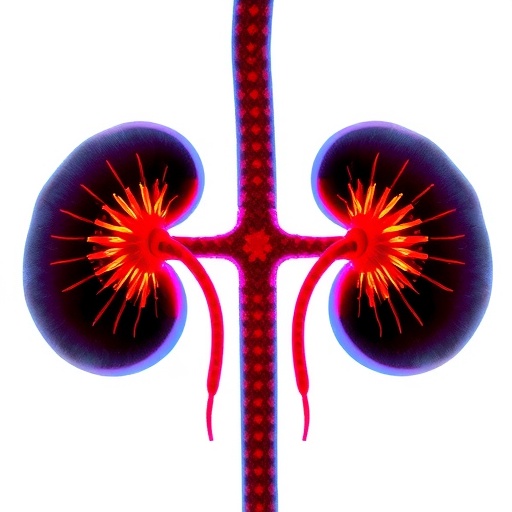In a remarkable advancement poised to revolutionize the field of two-dimensional materials, researchers have unveiled a novel approach that dramatically boosts the electronic quality of graphene by leveraging proximity screening. This breakthrough fundamentally addresses the long-standing challenge of extrinsic disorder impacting graphene’s exceptional properties, thereby opening avenues toward ultrahigh electronic mobilities and refined quantum phenomena at unprecedentedly low magnetic fields.
The cornerstone of this study lies in the implementation of innovative proximity-gated devices, which incorporate an ultrathin metallic layer placed in close vicinity to graphene. This configuration acts as a dynamic electronic environment that screens out detrimental charge inhomogeneities and potential fluctuations, thus effectively suppressing spatial disorder. Owing to this proximity screening effect, the researchers observed the emergence of exceptionally narrow Landau levels, a hallmark of pristine electronic states, manifesting in the form of Shubnikov-de Haas (SdH) oscillations detectable at record-low magnetic fields.
One of the striking experimental feats reported is the observation of more than fifteen distinct SdH oscillations at an astonishingly low magnetic induction of just 50 millitesla and temperatures as low as 2 kelvin. These oscillations correspond to high filling factors exceeding 60, with cyclotron gap energies dipping down to a mere 1.1 millielectronvolts. Such fine resolution of Landau quantization vividly attests to the minimized spatial charge fluctuations near the Dirac point, estimated to be around 0.5 meV, marking a new benchmark in the ultraclean limit of graphene-based systems.
.adsslot_yd2iOKzVbn{ width:728px !important; height:90px !important; }
@media (max-width:1199px) { .adsslot_yd2iOKzVbn{ width:468px !important; height:60px !important; } }
@media (max-width:767px) { .adsslot_yd2iOKzVbn{ width:320px !important; height:50px !important; } }
ADVERTISEMENT
Equally groundbreaking is the identification of the onset of SdH oscillations at magnetic fields as low as 1 to 2 millitesla. Comparatively, conventional reference devices featuring remote graphite or silicon wafer gates exhibit onset fields roughly an order of magnitude higher, lying around 35 and 80 millitesla, respectively. These findings decisively corroborate the superiority of proximity screening in achieving vastly reduced electronic disorder, thereby fostering the conditions for Landau quantization and quantum coherence at near-zero field strengths.
To rigorously confirm that the detected minima in longitudinal resistivity stemmed from genuine Landau quantization effects rather than spurious interference fluctuations inherent to mesoscopic systems, the team employed a multifaceted validation strategy. By mapping the resistance features across the combined parameter space of carrier density and magnetic field and by dynamically altering the electric field distribution through dual gating schemes, they ensured that the SdH oscillations remained robust and invariant, unlike the fluctuating mesoscopic background. Such comprehensive checks reinforce the intrinsic nature of the observed oscillations.
Delving deeper into the quantum mechanical underpinnings, the quantum mobility—a measure describing the degree of phase-coherent transport insensitive to device geometry—was estimated from the onset fields of SdH oscillations using a well-established empirical relationship between mobility and critical magnetic field. Validation against the classical Dingle formula revealed that the criterion μ_q B* ≈ 1 holds within 10 to 20 percent accuracy. Applying this relationship to the observed onset fields implies record-high quantum mobilities exceeding 10 million square centimeters per volt-second, a testament to the extraordinary electronic quality imparted by proximity screening.
This quantum mobility lower bound subsequently yields transport mobilities surpassing 60 million cm²V⁻¹s⁻¹, an order of magnitude increase over previously reported values for graphene devices. Such ultrahigh mobilities intimate electron mean free paths extending well beyond micrometer scales, satisfying the stringent conditions necessary for completed cyclotron orbits and uninterrupted quantum transport. The direct experimental evidence firmly establishes proximity gating as a transformative route to eliminate subtle scattering mechanisms that thwart perfect transport.
Moreover, the researchers demonstrated that the pristine electronic landscape enabled the complete development of the quantum Hall effect (QHE) at remarkably low magnetic fields below 5 millitesla. The hallmark quantized Hall resistance plateaux exhibited sharp transitions between electron and hole regimes with charge inhomogeneity widths on the order of 3×10⁷ cm⁻². These observations not only highlight the exceptional uniformity of charge landscapes but also reinforce the precise tunability and stability of proximity-gated graphene devices under ambient-like experimental conditions.
Importantly, the emergence and quality of QHE plateaux at such low magnetic fields were shown to be influenced not solely by electron mobility but critically dependent on the geometrical width of the voltage probes. Devices with larger probe widths facilitated earlier and more complete plateau formation, a consequence of the interplay among cyclotron diameters, magnetic lengths, and edge-state reflections. This nuanced insight underscores the vital role of device architecture in fully harnessing graphene’s quantum transport potential.
From a methodological standpoint, the work exhibits meticulous attention to experimental controls, including temperature cycling to suppress mesoscopic fluctuations and strategic dual gating to modulate electrostatic landscapes dynamically. These protocols decisively isolated the intrinsic electronic responses associated with Landau quantization from extraneous noise and disorder, paving the way for reproducible and robust measurements of quantum mobility and magnetotransport features.
The fundamental implications of these findings resonate far beyond graphene itself. The proximity screening technique, by dramatically refining electronic homogeneity, establishes a new paradigm for engineering ultraclean two-dimensional systems. This paves the way for prospective quantum devices that exploit coherent transport, fractional quantum Hall states, and other emergent quantum phases hitherto obscured by disorder. The potential for scalability and integration into complex heterostructures further elevates the technology’s relevance for future electronics and quantum information platforms.
In summary, the introduction of proximity gating effectively screens out detrimental environmental perturbations in graphene, enabling the observation of quantum oscillations and Hall quantization at magnetic fields substantially lower than previously achievable limits. The resultant ultrahigh electronic mobilities and extremely low charge inhomogeneities redefine the landscape of two-dimensional electron systems, heralding a new chapter in quantum materials research with exciting prospects for fundamental physics and technological innovation.
This study, spearheaded by Domaretskiy, Wu, Nguyen, and collaborators, not only pushes the frontier of graphene quality but also sets a compelling precedent for leveraging interface engineering to optimize electronic properties in van der Waals heterostructures. The work’s rigorous quantitative analyses and state-of-the-art device fabrication herald a milestone with broad impact across condensed matter physics and materials science.
As the scientific community digests the implications of these results, future research directions are poised to explore the interplay of proximity screening with other quantum phenomena such as superconductivity and topological states. The exceptional cleanliness and control demonstrated here promise to unlock many-body effects and exotic physics at low energy scales, underscoring the transformative power of precise electrostatic environment engineering.
Subject of Research:
Graphene electronic properties enhanced by proximity screening and quantum transport phenomena.
Article Title:
Proximity screening greatly enhances electronic quality of graphene.
Article References:
Domaretskiy, D., Wu, Z., Nguyen, V.H. et al. Proximity screening greatly enhances electronic quality of graphene. Nature 644, 646–651 (2025). https://doi.org/10.1038/s41586-025-09386-0
Image Credits: AI Generated
DOI: https://doi.org/10.1038/s41586-025-09386-0
Tags: advancements in electronic materials sciencecharge inhomogeneities suppression techniquescyclotron gap energy measurementselectronic quality improvement in two-dimensional materialsextrinsic disorder in two-dimensional materialsinnovative proximity-gated devicesLandau levels in graphene researchproximity screening in graphenequantum phenomena in graphenerecord-low magnetic field experimentsShubnikov-de Haas oscillations at low fieldsultrahigh electronic mobilities in graphene





